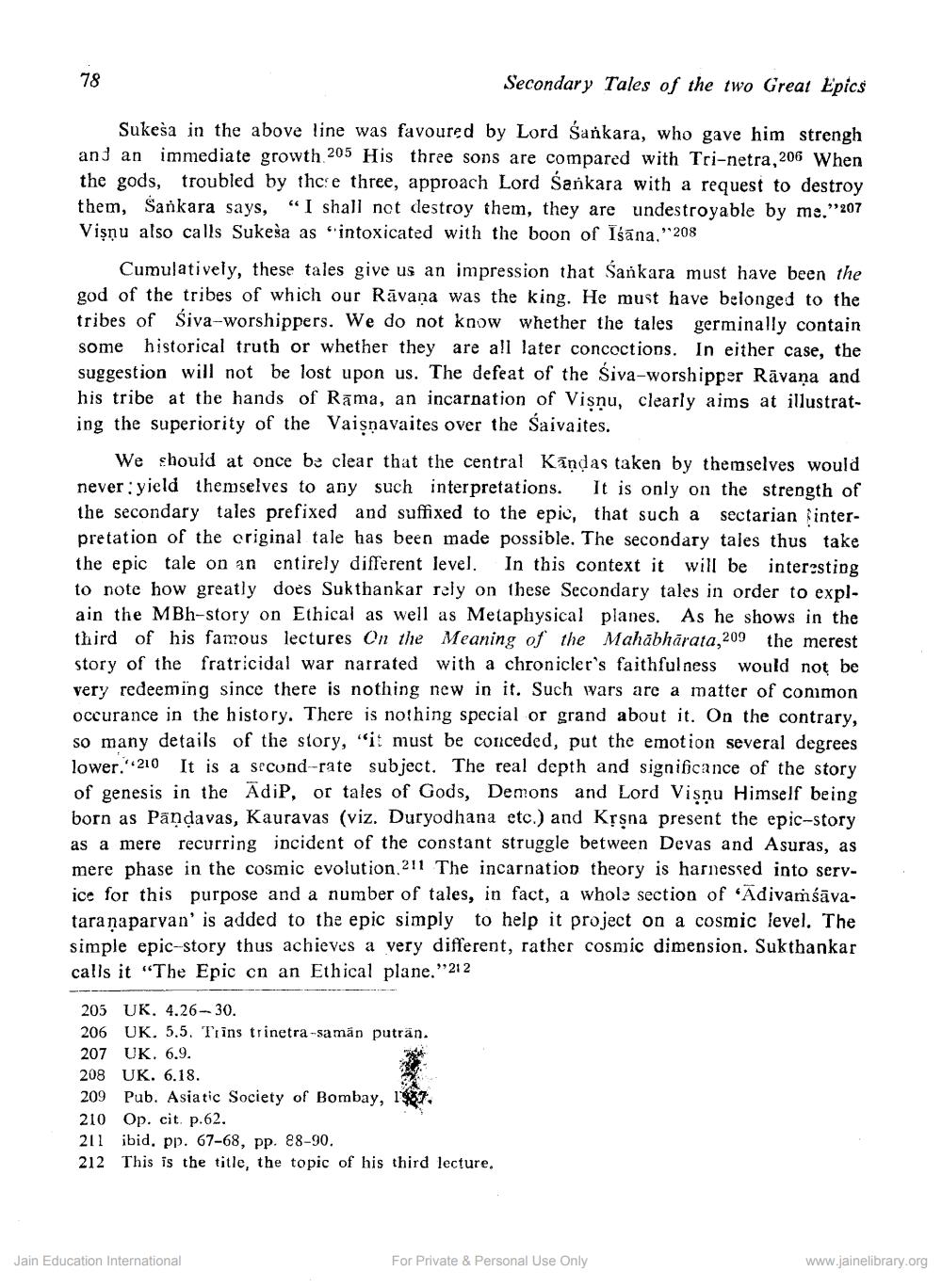________________
10
Secondary Tales of the two Great Epics
Sukeša in the above line was favoured by Lord Sankara, who gave him strengh anan immediate growth 205 His three sons are compared with Tri-netra, 206 When the gods, troubled by thc e three, approach Lord Sankara with a request to destroy them, Sankara says, “I shall not destroy them, they are undestroyable by me.”207 Vişnu also calls Sukesa as "intoxicated with the boon of Išāna."208
Cumulatively, these tales give us an impression that Sankara must have been the god of the tribes of which our Rāvana was the king. He must have belonged to the tribes of Śiva-worshippers. We do not know whether the tales germinally contain some historical truth or whether they are all later concoctions. In either case, the suggestion will not be lost upon us. The defeat of the Śiva-worshipper Rāvana and his tribe at the hands of Rāma, an incarnation of Vişnu, clearly aims at illustrating the superiority of the Vaisnavaites over the Saivaites.
We should at once be clear that the central Kandas taken by themselves would never yield themselves to any such interpretations. It is only on the strength of the secondary tales prefixed and suffixed to the epic, that such a sectarian interpretation of the criginal tale has been made possible. The secondary tales thus take the epic tale on an entirely different level. In this context it will be interesting to note how greatly does Sukthankar rely on these Secondary tales in order to explain the MBh-story on Ethical as well as Metaphysical planes. As he shows in the third of his famous lectures on the Meaning of the Mahābhārata,209 the merest story of the fratricidal war narrated with a chronicler's faithfulness would not be very redeeming since there is nothing new in it. Such wars are a matter of common occurance in the history. There is nothing special or grand about it. On the contrary, so many details of the story, “it must be conceded, put the emotion several degrees lower.210 It is a second-rate subject. The real depth and significance of the story of genesis in the Adip, or tales of Gods, Demons and Lord Visnu Himself being born as Pandavas, Kauravas (viz. Duryodhana etc.) and Krsna present the epic-story as a mere recurring incident of the constant struggle between Devas and Asuras, as mere phase in the cosmic evolution 211 The incarnation theory is harnessed into service for this purpose and a number of tales, in fact, a whole section of 'Adivamśāvatara naparvan' is added to the epic simply to help it project on a cosmic level. The simple epic-story thus achieves a very different, rather cosmic dimension. Sukthankar calls it "The Epic on an Ethical plane.”212
205 UK, 4.26 - 30. 206 UK. 5,5. Trins trinetra-saman puträn. 207 UK. 6.9. 208 UK. 6.18. 209 Pub. Asiatic Society of Bombay, 1837. 210 Op. cit. p.62. 211 ibid. pp. 67-68, pp. 88-90. 212 This is the title, the topic of his third lecture.
Jain Education International
For Private & Personal Use Only
www.jainelibrary.org




